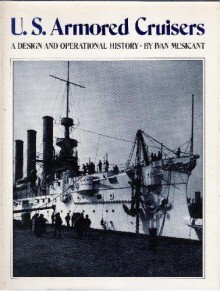



Japan's attack on Pearl Harbor on December 7 1941 caught the U.S. Navy by surprise in more ways than one. For not only did Japan succeed in disabling a major portion of the Pacific Fleet, the attack by waves of bomb- and torpedo-carrying planes inaugurated a new style of naval warfare for which the United States was unprepared. The learning curve that the U.S. was forced to undertake serves as a key theme of Ian Toll's book, which chronicles the first six months of the war in the Pacific. During these months the Japanese enjoyed virtually free reign in the Pacific, as their planes and ships swept aside what opposition the Western powers could throw together on short notice. The result was a succession of victories won at a pace that astonished even the Japanese themselves.
Yet as Toll demonstrates, the United States was quick to absorb the lessons of the new style of warfare. Here he focuses on the carrier operations that formed the initial response to the Japanese onslaught. While the famous Doolittle raid gets its due here, Toll rightly highlights the often overlooked strikes on Japanese bases in the Marshall and Gilbert island chains Not only did these strikes give the U.S. Navy valuable experience, but they were central to Admiral Yamamoto's decision to stage an invasion of Midway Island in an effort to draw the remaining U.S. forces out for a decisive engagement. The resulting battle in June 1942 proved the turning point of the war in the Pacific, however, as the sinking of the four carriers that formed the core of the Kido Butai deprived the Japanese of their ability to conduct further offensive operations.
Toll describes these months in a text that engages the reader with dramatic yet straightforward prose. His pen portraits of the major commanders -- men like Chester Nimitz, Ernest King, and Isoroku Yamamoto -- are a particular strength of the book, as is his integration of the role American codebreakers played in this stage of the war. Though he bases his book almost entirely upon previously published works, his analysis and his evocative writing style make this a book that even readers familiar with the subject will find well worth their time. It's a promising start to what, when completed, could prove to be an enduring go-to source for anyone interested in reading about the Second World War in the Pacific.
 Interesting and fascinating book.
Interesting and fascinating book.

A few years ago I decided I wanted to read a naval history of the Civil War. To my surprise, I learned that, for all that has been written about the conflict, there are relatively few books about its naval aspects and the ones I found proved disappointing. Had I waited a little longer I would have discovered that this book was a perfect fit for my needs, as James McPherson brings his expertise as the nation's foremost Civil War historian to the study of its naval aspects. Drawing upon both primary sources and secondary studies he surveys the various components of the naval war, from the Union blockade that was a critical dimension of the conflict to the revolutionary development of steam-powered ironclads, all of which he describes in his clear and assured prose. If there is a complaint to be made about this book it is that the apparent parameters of the Littlefield series for which he wrote it limited the amount of depth in which he can explore his subject, yet within its confines he has provided the best single-volume history of the Civil War at sea there is or is likely to be for some time to come.

Ivan Musicant's book provides a class-by-class description of the armored cruisers built by the United States Navy between the late 1880s (the beginning of what Musicant terms "the American naval renaissance") and the abandonment of the concept just two decades later. As Musicant explains at the end of his book, armored cruisers (which were defined by the preference for armored protection over speed in their design) were anachronistic and superseded quickly by the advances in naval warfare that spawned the first battlecruisers in 1908. For much of that period, armored cruisers were the most powerful oceangoing vessels in the U.S. fleet and key to ideas of American power projection as the United States began to exert its power on the national stage.
The problem with Musicant's book is that there is little effort to explain the doctrine behind the vessels, or how these ideas were reflected in the design and deployment of the ships. Instead Musicant offers readers a more conventional operational history of each vessel, one that describes their various deployments and modifications over their lifespan. In this respect his book contrasts poorly with John Reilly and Robert Scheina's American Battleships, 1886-1923: Predreadnought Design and Construction, which offers a far more comprehensive analysis of the contemporary development of a different class of warships. Thus, while Musicant's book remains a useful account of the history of these warships, it is far from the final word on their development at a pivotal time in American naval history.